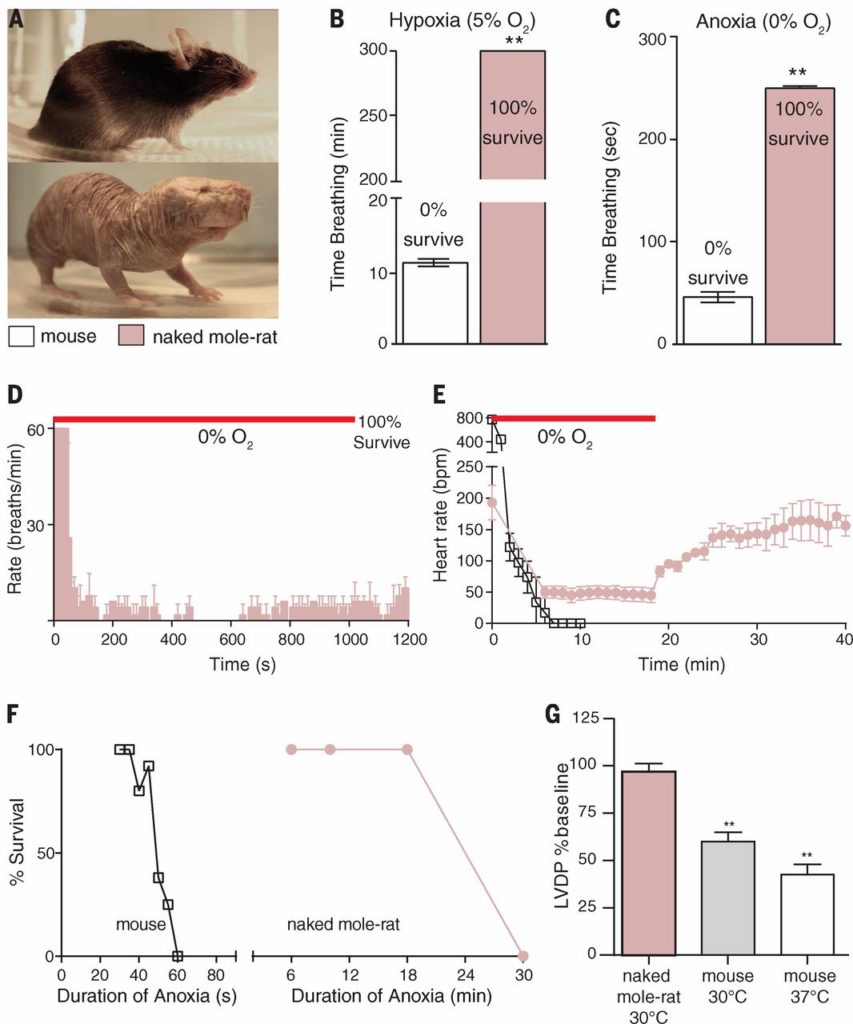Safe anaerobic metabolism
Naked mole-rats live in large colonies deep underground in hypoxic conditions. Park et al. found that these animals fuel anaerobic glycolysis with fructose by a rewired pathway that avoids tissue damage (see the Perspective by Storz and McClelland). These results provide insight into the adaptations that this strange social rodent has to make for life underground. They also have implications for medical practice, particularly for understanding how to protect tissues from hypoxia.
Abstract
The African naked mole-rat’s (Heterocephalus glaber) social and subterranean lifestyle generates a hypoxic niche. Under experimental conditions, naked mole-rats tolerate hours of extreme hypoxia and survive 18 minutes of total oxygen deprivation (anoxia) without apparent injury. During anoxia, the naked mole-rat switches to anaerobic metabolism fueled by fructose, which is actively accumulated and metabolized to lactate in the brain. Global expression of the GLUT5 fructose transporter and high levels of ketohexokinase were identified as molecular signatures of fructose metabolism. Fructose-driven glycolytic respiration in naked mole-rat tissues avoids feedback inhibition of glycolysis via phosphofructokinase, supporting viability. The metabolic rewiring of glycolysis can circumvent the normally lethal effects of oxygen deprivation, a mechanism that could be harnessed to minimize hypoxic damage in human disease.







